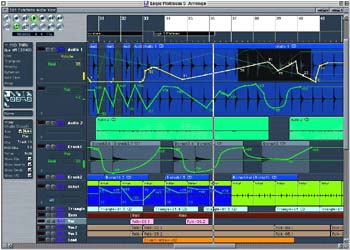Emagic Amt8 Driver Download

# # List of USB ID's # # Maintained by Stephen J. Gowdy # If you have any new entries, send them to the maintainer. # Send entries as patches (diff -u old new). Emagic Amt8 Usb Midi Driver for Windows 7 32 bit, Windows 7 64 bit, Windows 10, 8, XP. Uploaded on 3/14/2017, downloaded 4920 times, receiving a 86/100 rating by 2561 users.
AMT8 RS232 Wiring When bought they discontinued the AMT8 MIDI interface but you can still find them second hand. They can be connected by USB or serial cable (serial cable has the advantage of longer cable runs) but beware, the serial cable required isn't a standard type cable and you wont be able to buy a ready made cable off the shelf. Sound Horizon Elysion Rare more.
Perhaps the easiest way to make your own is to buy a Null Modem cable, cut one end off and rewire the end you cut off so that it corresponds with this diagram: Pin numbers are normally embossed into the plastic next to the pins; you may need a magnifying glass to see them.

Paolo Hardware (desktop): i7-880 3.06 Ghz; 8 Gig RAM; Asus P7H55-M/USB3; Echo Gina 24 PCI sound card; ESI M8U XL 8x8 midi interface; Steinberg CMC-TP. Software (desktop):: Windows 8.1 Enterprise (64 bit) / Cubase Pro 9.5 v9.5.0 (64 bit) / WaveLab Pro 9 v9.0.35 (64 bit) / HALion 6 (64 bit) / HALion Symphonic Orchestra / Synthogy Ivory II American Concert D. Software (laptop Sony VAIO i5-4200U 2.29 Ghz; 8 Gig RAM): Windows 10 Home (64 bit) / Cubase Elements 9 v9.0.30 (64 bit). Monitors: Genelec 8030. Boy Better Know Edition 3. Breeze wrote:I've got a great DIY GM5-based MIDI interface now on the PC pray tell more! There's been several group buys over at the MidiBox.org site, but it looks like the current one (the 3rd) is pretty much closed as there aren't any more GM5's available from that source.
It comes out pretty cheap for a very good 5x5 interface, but unless you have experience with electronics I don't recommend it. The only hard part for me was soldering the damn chip in place; it's so tiny, I ended up gluing it to the PC board so it would stop moving to allow me to solder it. And soldering these chips is a bit challenging: I ended up using the 'flood and suck' method I've built two of these and they work perfectly and are natively recognized on both Mac OS X and Win7-64. But ploytec provides a good driver for windows which runs even better. Obviously I'm using these on W7. For less than 30 euro in parts each it was a good deal. Paolo Hardware (desktop): i7-880 3.06 Ghz; 8 Gig RAM; Asus P7H55-M/USB3; Echo Gina 24 PCI sound card; ESI M8U XL 8x8 midi interface; Steinberg CMC-TP.
Software (desktop):: Windows 8.1 Enterprise (64 bit) / Cubase Pro 9.5 v9.5.0 (64 bit) / WaveLab Pro 9 v9.0.35 (64 bit) / HALion 6 (64 bit) / HALion Symphonic Orchestra / Synthogy Ivory II American Concert D. Software (laptop Sony VAIO i5-4200U 2.29 Ghz; 8 Gig RAM): Windows 10 Home (64 bit) / Cubase Elements 9 v9.0.30 (64 bit).
Monitors: Genelec 8030. Tommy-boy wrote:Just curious, for the guys that are concerned about multi-client drivers - why is this important? I typically run my gear from Cubase. Are there other midi apps that people use frequently along with Cubase? -Tom Speaking for myself, I run at the same time with Cubase mainly extrernal hardware editors/librarians: Roland Fantom X editor/librarian, Sound Diver (adaptation for the Roland VK8-M), DSI MoPho editor/librarian, etc. I'm sure others would have plenty more examples. Paolo Got it.
Come to think of it, I sometimes run an XV editor (for my XV-3080s) at the same time as Cubase. Guess the little Roland um-3g boxes arent the answer then. I have two midex8s that just work well. Maybe I'll hold off on the 64 bit upgrade for a while more. UAD card aint there yet either. I strongly suspect you should find the correct registry keys for YOUR system. Anyway, what I did: I analyzed the winXP registry of an XP installation on a different partition on the same PC of the Win7 32 bit installation, looking for the relevant registry keys for the amt8 (use Regedit to search 'emagic', 'unitor', 'amt8', and when you find one, hit F3 to find all the next recurrences on the the whole registry) and then I applied the same registry Keys in Win 7 (that needed a little tweaking actually: e.g.
I remember a particular key that needed some sort of administrator privileges to be edited, but I don't remember which one; I remember I searched on Google how to edit that particular key, and found the solution). For the same purpose, I also analyzed the UNI2k227.inf file: the old 2.27 WinXP driver doesn't have a setup file, you just have the driver files (.sys,.dll) and an.inf (text) file containing the instructions for the OS to install the driver.